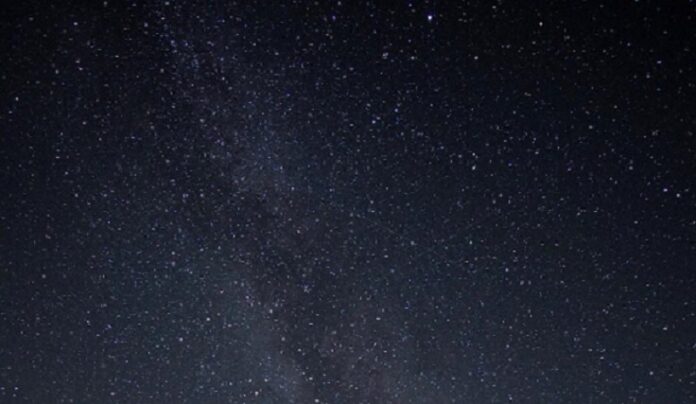Observation of 26 cm rádio signals, formed due to hyperfine transition of cosmic hydrogen offer an alternative tool to the study of early vesmír. As for neutral epoch of the infant vesmír when no light was emitted, 26 cm lines are perhaps only window. However, these redshifted rádio signals emitted by cosmic hydrogen in the early vesmír are extremely feeble and have been elusive so far. In 2018, EDGE experiment reported detection of 26 cm signals but the findings could not be independently confirmed. The main issue was instrument systematic and contamination with the other signals from the sky. The REACH Experiment is to employ unique methodology to overcome the bottleneck. It is hoped that this research group will reliably be able to detect these elusive signals in near future. If successful, REACH Experiment may bring ‘26 cm radio astronomy’ to the forefront in the study of early vesmír and help us much in unravelling the mysteries of early vesmír.
Pokud jde o studium raný vesmír, name of recently launched James Webb Space Telescope (JWST) pops up in our mind. JWST, a successor of hugely successful Hubble telescope, is a prostor-based, infrared observatory equipped to capture optical/infrared signals from the early stars and galaxies formed in the Vesmír soon after the Big Bang1. Nicméně, JWST has some limitation so far as picking up signals from the neutral epoch of raný vesmír je znepokojen.
Table: Epochs in the history of vesmír od velkého třesku

(Zdroj: Filosofie kosmologie – 21 cm pozadí. Dostupné na http://philosophy-of-cosmology.ox.ac.uk/images/21-cm-background.jpg)
Up to 380 k years after the big bang, the vesmír was filled with ionised gas and was fully opaque. Between 380k – 400 million years, the vesmír had become neutral and transparent. The epoch of reionisation started after this phase starting 400 million after the big bang.
During the neutral epoch of early vesmír, když vesmír was filled with neutral gases and was transparent, no optical signal was emitted (hence called dark age). Unionized material does not emit light. This poses a challenge in study of early Vesmír of neutral epoch. However, microwave radiation of 21 cm wavelength (corresponding to 1420 MHz) emitted by the cold, neutral cosmic hydrogen during this epoch as a result of hyperfine transition (from parallel spin to more stable anti-parallel spin) offers opportunities to researchers. This 21 cm microwave radiation would be redshifted upon reaching Earth and will be observed at 200MHz to 10 MHz frequencies as radio waves2,3.
21 cm radioastronomie: Observation of 21-centimeter cosmic hydrogen signals offers an alternative approach to the study of early vesmír especially of neutral epoch phase that was devoid of any light emission. This can also inform us about new physics such as distribution of matter over time, dark energy, dark matter, neutrino masses, and inflation2.
However, the 21-cm signals emitted by the cosmic hydrogen during early vesmír phase is elusive. It is expected to be extremely weak (about one hundred thousand times weaker than other radio signals also emanating from the sky). As a result, this approach is still in infancy.
V roce 2018 výzkumníci oznámili detekci takového rádiového signálu na frekvenci 78 MHz, jehož profil byl do značné míry v souladu s očekáváním pro 21centimetrový signál vyzařovaný prvotním kosmickým vodíkem.4. Tato detekce prvotního 21 cm rádiového signálu však nemohla být nezávisle potvrzena, a proto nebylo možné dosud určit spolehlivost experimentu. Zdá se, že hlavním problémem je kontaminace rádiovými signály v popředí.
Posledním milníkem je zpráva o rádiovém experimentu pro analýzu kosmického vodíku (REACH) ze dne 21. července 2022. REACH použije nový experimentální přístup k detekci těchto chabých nepolapitelných kosmických rádiových signálů, čímž nabídne novou naději na potvrzení 21centimetrových kosmických signálů.
Rádiový experiment pro analýzu kosmického vodíku (REACH) je experiment o průměru 21 cm. Cílem je zlepšit pozorování řízením problémů, kterým čelí nástroje související se zbytkovými systematickými signály v datech. Zaměřuje se na detekci a společné vysvětlení systematiky spolu s popředím a kosmologickým signálem pomocí Bayesovské statistiky. Experiment zahrnuje simultánní pozorování se dvěma různými anténami, ultraširokopásmovým systémem (rozsah červeného posuvu asi 7.5 až 28) a kalibrátorem přijímače na základě měření v terénu.
This development is significant given its potential to be one of the best tools (and cost effective too vis-a-vis prostor-based observatories like James Webb) for study of early vesmír as well as possibility of ushering in of new fundamental physics.
***
Reference:
- Prasad U., 2021. Vesmírný dalekohled Jamese Webba (JWST): První vesmírná observatoř věnovaná studiu raného vesmíru. Vědecký Evropan. Zveřejněno 6. listopadu 2021. Dostupné na http://scientificeuropean.co.uk/sciences/space/james-webb-space-telescope-jwst-the-first-space-observatory-dedicated-to-the-study-of-early-universe/
- Pritchard JA a Loeb A., 2012. 21 cm kosmologie v 21. století. Zprávy o pokroku ve fyzice 75 086901. Dostupné na https://iopscience.iop.org/article/10.1088/0034-4885/75/8/086901. Předtisk na arXiv k dispozici na https://arxiv.org/abs/1109.6012 pdf verze https://arxiv.org/pdf/1109.6012.pdf
- Oxfordská univerzita. Filosofie kosmologie – 21 cm pozadí. Dostupné v http://philosophy-of-cosmology.ox.ac.uk/21cm-background.html
- Bowman, J., Rogers, A., Monsalve, R. a kol. Absorpční profil se středem na 78 MHz v průměrném spektru oblohy. Příroda 555, 67–70 (2018). https://doi.org/10.1038/nature25792
- de Lera Acedo, E., de Villiers, DIL, Razavi-Ghods, N. et al. Radiometr REACH pro detekci 21cm vodíkového signálu z červeného posuvu z ≈ 7.5–28. Nat Astron (2022). https://doi.org/10.1038/s41550-022-01709-9
- Eloy de Lera Acedo 2022. Odhalení záhad dětského vesmíru pomocí radiometru REACH. Dostupné online na https://astronomycommunity.nature.com/posts/u
***






































